Films with theme "Documentary films about religion", sorted by revenue

Loose Change (film series) (2005)
, 1h22Directed by Dylan Avery
Origin USA
Genres Documentary
Themes Films based on the September 11 attacks, Films about religion, Films about terrorism, Transport films, Aviation films, Documentary films about law, Documentary films about war, Documentary films about historical events, Documentary films about politics, Documentary films about religion, Documentary films about technology, Documentary films about terrorism, Political films, Films about Islam, Dans un avion, Disaster films, Films about aviation accidents or incidents, Films about hijackings
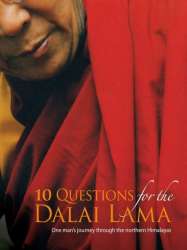 , 1h25
, 1h25Origin USA
Genres Documentary
Themes Films about writers, Films about religion, Films about Tibet, Documentaire sur une personnalité, Documentary films about religion, Films about Buddhism
The film begins as a chronicle of Rick Ray's journey through India to interview Tenzin Gyatso. The film switches between present and recent past, with stages of the trip introducing sections on the personal history of Tenzin Gyatso, the process used to select a Dalai Lama and Gyatso's journey into exile.

9/11: The Twin Towers (2006)
, 1h30Origin United-kingdom
Genres Documentary
Themes Films based on the September 11 attacks, Films about religion, Films about terrorism, Transport films, Aviation films, Documentary films about law, Documentary films about war, Documentary films about historical events, Documentary films about politics, Documentary films about religion, Documentary films about technology, Documentary films about terrorism, Political films, Films about Islam, Dans un avion, Disaster films, Films about aviation accidents or incidents, Films about hijackings
Actors Terence Stamp, William Hope, William Hope, François Chau, Eleanor Matsuura
11-Septembre - Dans les tours jumelles (titre original en anglais: 9/11: The Twin Towers) est un documentaire télévisé britannique de Richard Dale sur les attentats du 11 septembre 2001. Il est produit par la société de production Dangerous Films. Il a été diffusé pour la première fois le 3 septembre 2006 sur la chaîne de télévision américaine Discovery Channel, puis le 7 septembre sur la chaîne britannique publique BBC One. Le documentaire décrit le déroulement chronologique du drame à travers le destin de plusieurs des protagonistes. Il se présente en partie sous la forme d'un docufiction : les événements, remis en scène et joués par des acteurs, alternent avec les témoignages des survivants de l'attentat. Se mêlent à la fois images d'archives, événements reconstitués et entretiens. Le film a été plusieurs reprises sélectionné et récompensé. Il a notamment remporté d'un British Academy Television Award, et a été sélectionné aux Emmy Awards en 2007.
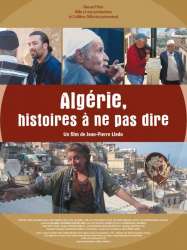 , 2h35
, 2h35Origin Algerie
Genres Documentary
Themes Films set in Africa, Films about religion, Documentary films about politics, Documentary films about religion, Political films, Films about Jews and Judaism
When independence is declared in 1962, the minority communities of Jewish and European origin flee Algeria. Four people of Muslim ascendency searching for the truth about their own lives evoke the last decades of French colonization, the years of war, from 1955 to 1962. Hatred and friendship lead us through a hidden memory: their relationships with their Jewish and Christian neighbours. The foundational myths of the new Algeria are revisited, but will they succeed in getting to the bottom of their own legends?

Zeitgeist (2007)
, 2h2Directed by Peter Joseph
Origin USA
Genres War, Documentary, Historical
Themes Films based on the September 11 attacks, La mondialisation, Films about religion, Films about terrorism, Transport films, Aviation films, Documentaire sur l'altermondialisme, Documentary films about law, Documentary films about war, Documentary films about historical events, Documentary films about politics, Documentary films about religion, Documentary films about technology, Documentary films about terrorism, Political films, Films based on the Bible, Films about Islam, Dans un avion, Portrayals of Jesus in film, Films about hijackings
Actors George Carlin
The film starts with animated visualizations, film segments and stock footage, a cartoon and audio quotes about spirituality by Chögyam Trungpa Rinpoche, then shots of war, explosions, and the September 11 attacks. Then the film's title screen is given. The introduction ends with a portion of a George Carlin monologue on religion accompanied by an animated cartoon. The rest of the film is in three parts with narration by Peter Joseph.

Budrus (2010)
, 1h10Directed by Julia Bacha
Origin USA
Genres Documentary
Themes Films set in Africa, Films about religion, Documentary films about law, Documentary films about war, Documentary films about historical events, Documentaire sur une personnalité, Documentary films about politics, Documentary films about religion, Political films, Films about Jews and Judaism
Jordana Horn in The Jewish Daily Forward states that: Budrus [is] a documentary by Julia Bacha that examines one West Bank town’s reaction to Israel’s construction of the security barrier. The town, with a population of 1,500, was set to be divided and encircled by the barrier, losing 300 acres of land and 3,000 olive trees. These trees were not only critical for economic survival but also sacred to the town’s intergenerational history. The film tells the story of Ayed Morrar, a Palestinian whose work for Fatah had led to five detentions in Israeli jails, but whose momentous strategic decision that the barrier would be best opposed by nonviolent resistance had far-reaching ramifications.
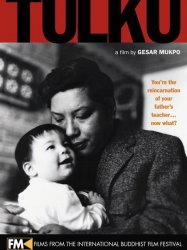
Tulku (2012)
, 1h15Directed by Gesar Mukpo
Origin Canada
Genres Documentary
Themes Films about religion, Films about Tibet, Documentaire sur une personnalité, Documentary films about religion, Films about Buddhism
Actors Gesar Mukpo
Gesar Mukpo begins by interviewing a fellow Canadian, Dylan Henderson, who was the first Caucasian tulku discovered in the West, recognized in 1975 by Chögyam Trungpa Rinpoche as the incarnation of one of his teachers. The identification was confirmed by Rangjung Rigpe Dorje, the 16th Karmapa, who requested that Henderson come to the Rumtek Monastery in India for the rest of his life. Chögyam Trungpa, however, recommended that he remain in the West. Henderson maintains his Buddhist studies and practices, but without the form and structure present in the East. He has a degree in anthropology and history.

Des hommes à part (2010)
, 52minutesOrigin France
Genres Documentary
Themes Films about religion, Documentary films about religion
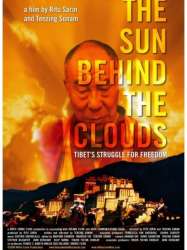 , 1h19
, 1h19Directed by Ritu Sarin, Tenzing Sonam
Origin Inde
Genres Documentary
Themes Films about writers, Films about religion, Films about Tibet, Documentary films about politics, Documentary films about religion, Political films, Films about Buddhism

Innocence of Muslims (2012)
, 14minutesDirected by Nakoula Basseley Nakoula, Alan Roberts
Origin USA
Themes Films set in Africa, Films about religion, Films about terrorism, Documentary films about law, Documentary films about war, Documentary films about historical events, Documentary films about politics, Documentary films about religion, Documentary films about terrorism, Political films, Films about Islam
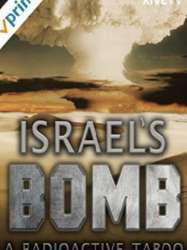 , 52minutes
, 52minutesOrigin German
Genres Documentary
Themes Environmental films, Films about religion, Documentary films about environmental issues, Documentary films about war, Documentary films about historical events, Documentary films about nuclear technology, Documentary films about religion, Documentary films about technology, Films about Jews and Judaism
Israël et le tabou de la bombe est un film documentaire allemand réalisé en 2012. Il raconte l'histoire du programme nucléaire israélien.

The Silver Fez (2009)
, 1h23Origin South africa
Genres Documentary
Themes Films about music and musicians, Films about religion, Documentary films about music and musicians, Documentaire sur une personnalité, Documentary films about religion, Musical films, Films about Islam
Once upon a time in a city at the end of Africa, Kaatji Davids, a house painter with barely two cents to his name, an old banjo and a few very close friends had the audacity to imagine that he would be the one to beat Hadji Bucks, undisputed champion of Cape Malay music. The prize is the Silver Fez, Holy Grail of Cape Town's Islamic subculture. The contest involves a cast of thousands and a staggering variety of melodies.

The Virgin, the Copts and Me (2011)
, 1h31Directed by Namir Abdel Messeeh
Origin France
Genres Comedy, Documentary
Themes Films about religion, Documentary films about religion
Actors Namir Abdel Messeeh
Namir is Egyptian, a Copt and now lives in France. When there is a family reunion, he buys an old video cassette recorded many years earlier at a religious holiday in his home village, when his mother said she had had a vision of the Blessed Virgin Mary. Namir realizes he has in his hands a very interesting subject for a documentary: he convinces his producer that it is a good idea and sets off on a journey that takes him back to his origins and puts his profession as a director to the test. However, he has not reckoned with his mother, the real protagonist of the story. Eventually, in her hometown, they recreate an apparition with the help of the other villagers.
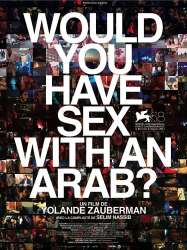 , 1h25
, 1h25Directed by Yolande Zauberman
Origin France
Genres Documentary
Themes Films set in Africa, Films about religion, Films about sexuality, Documentary films about law, Documentary films about war, Documentary films about historical events, Documentaire sur une personnalité, Documentary films about politics, Documentary films about religion, Political films, Films about Jews and Judaism
Actors Juliano Mer-Khamis
Dans les bars de Tel Aviv, la nuit, la réalisatrice demande à des jeunes Juifs s'ils auraient des relations sexuelles avec des Arabes, et à des jeunes Arabes s'ils feraient l'amour avec des Juifs. Chacun donne son avis, avec plus ou moins d'explications, sur le symbole que cela peut représenter pour eux (beaucoup l'ont déjà fait) ou au contraire leur refus. Des jeunes issus de familles mixtes (un parent juif, l'autre arabe) sont également interviewés. Le film recueille aussi les témoignages du journaliste Gideon Levy et de l'acteur Juliano Mer-Khamis, de mère juive et de père arabe, assassiné en 2011 par des Palestiniens à Jénine.
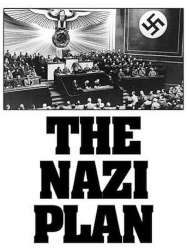
The Nazi Plan (1945)
Directed by George Stevens
Origin USA
Genres Documentary
Themes Films about racism, Films about religion, Documentary films about racism, Documentary films about law, Documentary films about war, Documentary films about historical events, Documentaire sur une personnalité, Documentary films about religion, Political films, Films about Jews and Judaism, Documentary films about World War II
The film's central footage and themes "relied heavily" on the work of German film maker Leni Riefenstahl, in particular the 1935 movie Triumph des Willens (Triumph of the Will).
 Connection
Connection